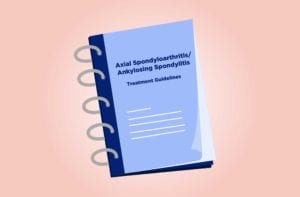In 2015, the American College of Rheumatology — in conjunction with the Spondylitis Association of America, and Spondyloarthritis Research and Treatment Network — released the first-ever official recommendations for treating people with anklyosing spondylitis (AS). While that document has helped guide physicians who care for people with AS, which is also sometimes called axial spondyloarthritis (AxSpA), a lot has changed in the past four years when it comes to AS treatment options.
In that time, new medications have hit the market and research has yielded new information about how effective specific drugs and disease management strategies (including the use of imaging tests) really are. In light of these changes, the same organizations that created the original guidelines have just release a 2019 update. The latest version was published in the journal Arthritis Care & Research.
“We did not reexamine all of the 2015 recommendations, but rather focused on those questions for which consequential new evidence was present,” the authors explained. “We added several new recommendations on how the newly available medications should fit in treatment strategies and on the use of imaging.”
“Based on the current evidence and the considerations of the panel, NSAIDs and TNFi remain the primary classes of medications for the treatment of AS and non-radiographic axial SpA,” the authors wrote. But the panel of experts did make several notable tweaks.
Some of the new guidelines, including some of those that remain unchanged from the previous version, have been designated as “strong” recommendations. That means they apply to most patients and are backed by “high-quality evidence.” Others are considered “conditional” recommendations, which means they only pertain to a specific subset of patients and/or that the evidence behind them is “low quality.”
Here are some highlights of the new recommendations that patients with AS/AxSpA should know about:
- Patients who don’t respond to a specific TNF inhibitor biologic should not switch to its biosimilar. (strong recommendation)
- Patients who are faring well on an originator TNF inhibitor should stick with it and not be mandated to switch to its biosimilar. (strong recommendation)
- Patients who are not improving enough on an NSAID should try a TNF inhibitor before considering a different kind of targeted medication, such as secukinumab (Cosentyx), ixekizumab (Taltz), or tofacitinib (Xeljanz). Patients who need one of these newer drugs should try secukinumab or ixekizumab over tofacitinib. (conditional recommendation)
- Patients who can’t take a TNF inhibitor should try secukinumab or ixekizumab over sulfasalazine, methotrexate, or tofacitinib. (conditional recommendation)
- Patients whose disease remains active despite trying a TNF inhibitor should try another TNF inhibitor before moving to a non-TNF biologic (conditional recommendation)
- Patients with active non-radiographic axSpA should use a TNF inhibitor. (strong recommendation, updated from conditional recommendation per 2015 guidelines)
- Patients who are taking a TNF inhibitor do not need co-treatment with methotrexate, even if the disease is active. (conditional recommendation)
- Patients who are stable on a biologic should continue using the drug rather than decreasing the dose or discontinuing it. (conditional recommendation)
- Patients whose disease status is unclear might benefit from getting an MRI of the spine or pelvis. (conditional recommendation)
- Patients who appear stable do not need to have MRIs for the purpose of confirming that they’re in remission. (conditional recommendation)
- Patients do not need routine imaging tests at set intervals, even if the disease is active. (conditional recommendation)
You can find the full guidelines here. Ask your provider if you have any questions about the new guidelines or how they might pertain to your care.






